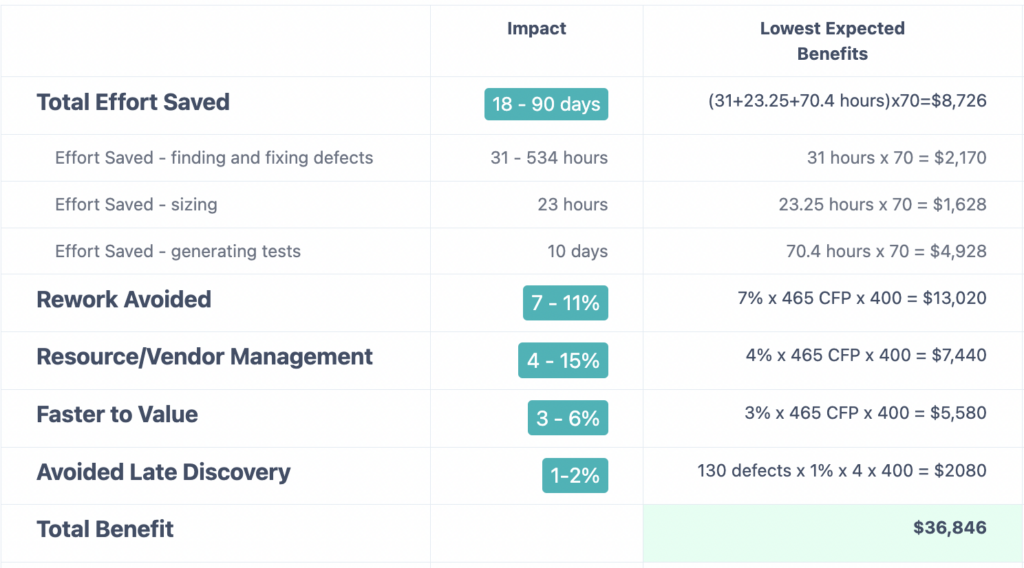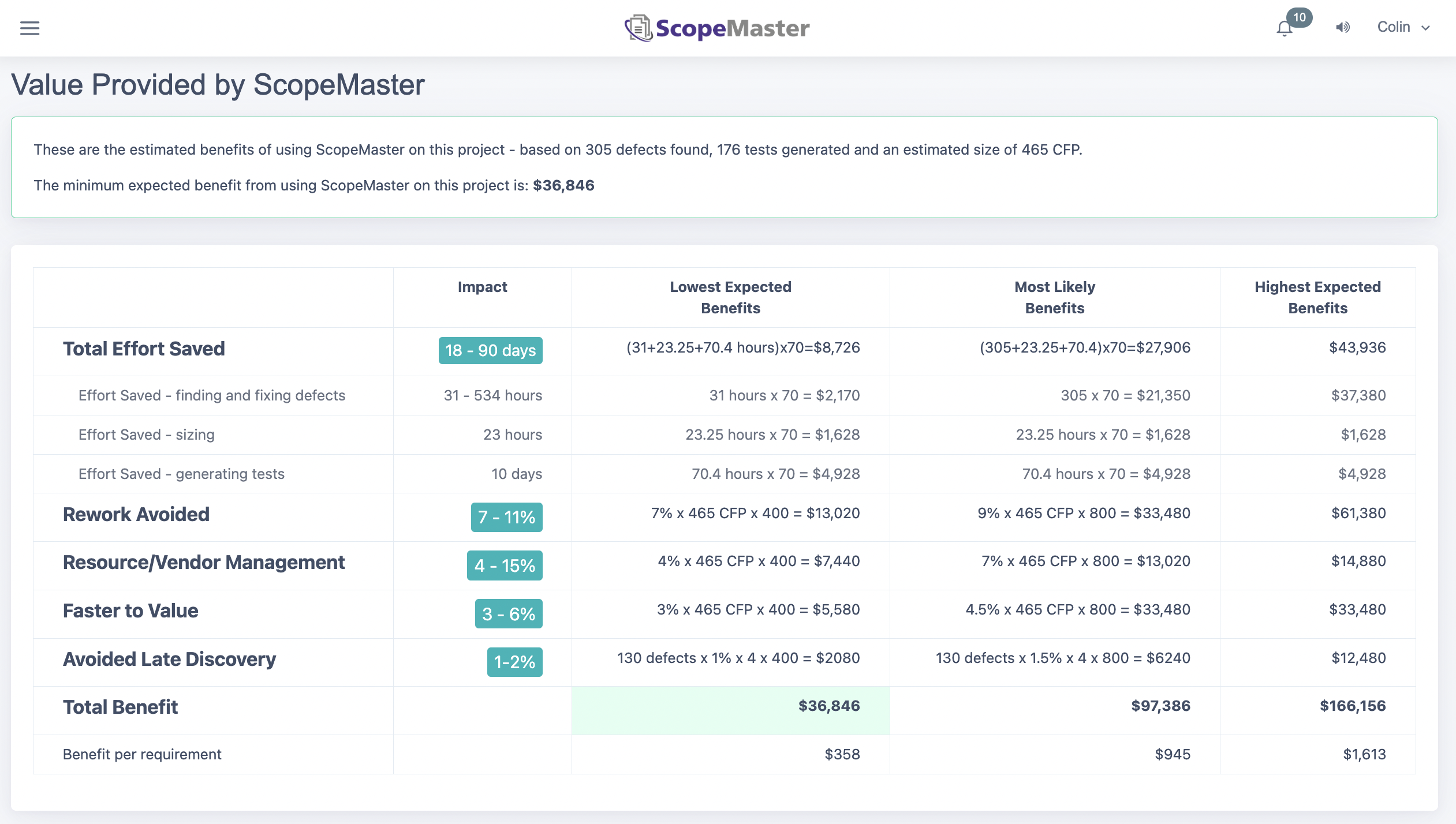Benefits Itemised – realtime ROI
ScopeMaster’s new Dynamic Value Report itemises the specific benefits of using the tool. This report estimates the value of the work that it has done, and the likely benefits that you can achieve from it. It shows the value that it is delivering to you as you use it, like a realtime ROI estimator.
Very few software products can tell precisely what value they provide as you use them. ScopeMaster is an exception. When you use ScopeMaster to examine your software requirements backlog, it now provides you with a dynamic report that itemises the value that you can achieve as a consequence of you using it.
Return on Investment many benefits

ScopeMaster automates and accelerates many aspects of software requirements work and project assessment.
Effort Saved – finding and fixing defects
The staff time that would have been consumed in meetings and other work to find and fix requirements defects. This is based on the number of defects has found in a set of requirements.
The typical manual effort for finding defects in requirements ranges from 0.075 to 1.125 hours per defect. Average: 0.75 hours (45 minutes)
The typical manual effort for fixing defects in requirements ranges from 0.025 to 0.625 hours per defect. Average: 0.25 hours (15 minutes)
How does this relate to technical debt? When taking short cuts or delivering code that is not quite right for the programming task of the moment, a development team incurs Technical Debt. One source of technical debt is from taking deliberate shortcuts, but another source of technical debt occurs when the team failed to understand the requirements, and programmed incorrectly as a result. And so we can describe requirements defects as forthcoming techincal debt.
Effort Saved – sizing
ScopeMaster automates functional sizing from requirements, this saves effort of doing so manually, with further (undeclared) benefits in project management. The usual effort to manually size from requirements is 3 minutes per CFP. It can range from 0.6 minutes per CFP to 5.1 minutes per CFP.
Also, if you are currently using story points and elect to switch to using COSMIC function points, then you will enjoy additional savings over current practices. Not all effort estimation should be abandoned but about 60% of time spent on story point estimating should be recoverable. The usual team time spent estimating story points is about 5 minutes per CFP.
Effort Saved – generating test scenarios
ScopeMaster generates functional tests scenarios (or test headers), saving time on doing so manually.
The manual effort of generating a functional test scenarios is typically 0.4 hours In this case ScopeMaster will create several per user story.
Rework Avoided
Better requirements leads to less rework. Rework is typically 30% of total dev cost. Rework due to poor requirements is typically 60% of all rework. ScopeMaster reduces rework by 40-60% representing 7 – 11% of total cost.
Resource/Vendor Management
Knowing the size of a project (specifically the functional size) provides insight into the likely resourcing and cost of the project. If it’s an internal project, likely result is more efficient allocation of resources. If outsourced, then knowing the size allows for better negotiations and vendor management.
The typical benefit of knowing the size in managing resources efficiently or vendor management through knowing the size is 4 – 15% of total cost.
Faster to Value
Deliver business value sooner, as a consequence of less rework. Most projects are time sensitive AND deliver value considerably greater than their costs. A modest indication of additional value attributable to faster delivery as a percentage of cost. % of cost 3 – 6%
Avoided Late Defect Discovery (avoiding technical debt)
If just 1.5% of the serious defects would otherwise have reached production, each incurring a 4x normal repair cost, expect to enjoy substantial direct benefits and even greater indirect benefits.
Value Categories
Direct and and indirect benefits of using ScopeMaster:
- Reduced effort of finding and fixing defects in requirements
- Reduced effort in sizing the work
- Reduced effort in generating test scenarios
- Rework avoided
- Vendor/resource management
- Faster to value
- Avoided late defect exposure
When you use ScopeMaster to analyse your backlog, you can expect an aggregated benefit of over $30,000 from just 100 user stories. This is the total from a combination of effort saved, rework avoided etc.

